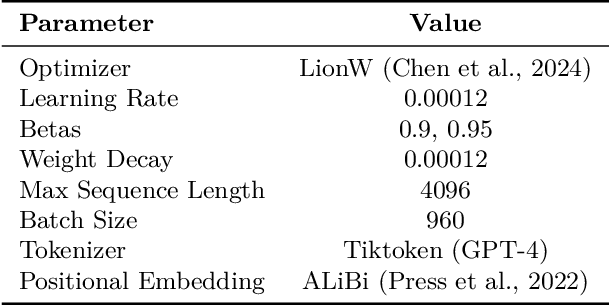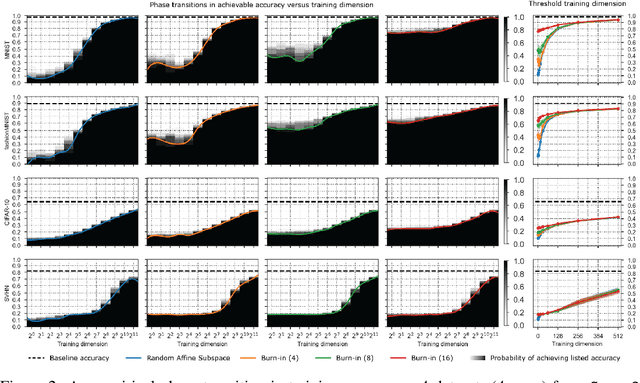Brett W. Larsen
Tensor Decomposition Meets RKHS: Efficient Algorithms for Smooth and Misaligned Data
Aug 11, 2024Abstract:The canonical polyadic (CP) tensor decomposition decomposes a multidimensional data array into a sum of outer products of finite-dimensional vectors. Instead, we can replace some or all of the vectors with continuous functions (infinite-dimensional vectors) from a reproducing kernel Hilbert space (RKHS). We refer to tensors with some infinite-dimensional modes as quasitensors, and the approach of decomposing a tensor with some continuous RKHS modes is referred to as CP-HiFi (hybrid infinite and finite dimensional) tensor decomposition. An advantage of CP-HiFi is that it can enforce smoothness in the infinite dimensional modes. Further, CP-HiFi does not require the observed data to lie on a regular and finite rectangular grid and naturally incorporates misaligned data. We detail the methodology and illustrate it on a synthetic example.
Does your data spark joy? Performance gains from domain upsampling at the end of training
Jun 05, 2024



Abstract:Pretraining datasets for large language models (LLMs) have grown to trillions of tokens composed of large amounts of CommonCrawl (CC) web scrape along with smaller, domain-specific datasets. It is expensive to understand the impact of these domain-specific datasets on model capabilities as training at large FLOP scales is required to reveal significant changes to difficult and emergent benchmarks. Given the increasing cost of experimenting with pretraining data, how does one determine the optimal balance between the diversity in general web scrapes and the information density of domain specific data? In this work, we show how to leverage the smaller domain specific datasets by upsampling them relative to CC at the end of training to drive performance improvements on difficult benchmarks. This simple technique allows us to improve up to 6.90 pp on MMLU, 8.26 pp on GSM8K, and 6.17 pp on HumanEval relative to the base data mix for a 7B model trained for 1 trillion (T) tokens, thus rivaling Llama-2 (7B)$\unicode{x2014}$a model trained for twice as long. We experiment with ablating the duration of domain upsampling from 5% to 30% of training and find that 10% to 20% percent is optimal for navigating the tradeoff between general language modeling capabilities and targeted benchmarks. We also use domain upsampling to characterize at scale the utility of individual datasets for improving various benchmarks by removing them during this final phase of training. This tool opens up the ability to experiment with the impact of different pretraining datasets at scale, but at an order of magnitude lower cost compared to full pretraining runs.
Duality of Bures and Shape Distances with Implications for Comparing Neural Representations
Nov 19, 2023Abstract:A multitude of (dis)similarity measures between neural network representations have been proposed, resulting in a fragmented research landscape. Most of these measures fall into one of two categories. First, measures such as linear regression, canonical correlations analysis (CCA), and shape distances, all learn explicit mappings between neural units to quantify similarity while accounting for expected invariances. Second, measures such as representational similarity analysis (RSA), centered kernel alignment (CKA), and normalized Bures similarity (NBS) all quantify similarity in summary statistics, such as stimulus-by-stimulus kernel matrices, which are already invariant to expected symmetries. Here, we take steps towards unifying these two broad categories of methods by observing that the cosine of the Riemannian shape distance (from category 1) is equal to NBS (from category 2). We explore how this connection leads to new interpretations of shape distances and NBS, and draw contrasts of these measures with CKA, a popular similarity measure in the deep learning literature.
Estimating Shape Distances on Neural Representations with Limited Samples
Oct 09, 2023Abstract:Measuring geometric similarity between high-dimensional network representations is a topic of longstanding interest to neuroscience and deep learning. Although many methods have been proposed, only a few works have rigorously analyzed their statistical efficiency or quantified estimator uncertainty in data-limited regimes. Here, we derive upper and lower bounds on the worst-case convergence of standard estimators of shape distance$\unicode{x2014}$a measure of representational dissimilarity proposed by Williams et al. (2021). These bounds reveal the challenging nature of the problem in high-dimensional feature spaces. To overcome these challenges, we introduce a new method-of-moments estimator with a tunable bias-variance tradeoff. We show that this estimator achieves superior performance to standard estimators in simulation and on neural data, particularly in high-dimensional settings. Thus, we lay the foundation for a rigorous statistical theory for high-dimensional shape analysis, and we contribute a new estimation method that is well-suited to practical scientific settings.
Unmasking the Lottery Ticket Hypothesis: What's Encoded in a Winning Ticket's Mask?
Oct 06, 2022



Abstract:Modern deep learning involves training costly, highly overparameterized networks, thus motivating the search for sparser networks that can still be trained to the same accuracy as the full network (i.e. matching). Iterative magnitude pruning (IMP) is a state of the art algorithm that can find such highly sparse matching subnetworks, known as winning tickets. IMP operates by iterative cycles of training, masking smallest magnitude weights, rewinding back to an early training point, and repeating. Despite its simplicity, the underlying principles for when and how IMP finds winning tickets remain elusive. In particular, what useful information does an IMP mask found at the end of training convey to a rewound network near the beginning of training? How does SGD allow the network to extract this information? And why is iterative pruning needed? We develop answers in terms of the geometry of the error landscape. First, we find that$\unicode{x2014}$at higher sparsities$\unicode{x2014}$pairs of pruned networks at successive pruning iterations are connected by a linear path with zero error barrier if and only if they are matching. This indicates that masks found at the end of training convey the identity of an axial subspace that intersects a desired linearly connected mode of a matching sublevel set. Second, we show SGD can exploit this information due to a strong form of robustness: it can return to this mode despite strong perturbations early in training. Third, we show how the flatness of the error landscape at the end of training determines a limit on the fraction of weights that can be pruned at each iteration of IMP. Finally, we show that the role of retraining in IMP is to find a network with new small weights to prune. Overall, these results make progress toward demystifying the existence of winning tickets by revealing the fundamental role of error landscape geometry.
Lottery Tickets on a Data Diet: Finding Initializations with Sparse Trainable Networks
Jun 02, 2022



Abstract:A striking observation about iterative magnitude pruning (IMP; Frankle et al. 2020) is that $\unicode{x2014}$ after just a few hundred steps of dense training $\unicode{x2014}$ the method can find a sparse sub-network that can be trained to the same accuracy as the dense network. However, the same does not hold at step 0, i.e. random initialization. In this work, we seek to understand how this early phase of pre-training leads to a good initialization for IMP both through the lens of the data distribution and the loss landscape geometry. Empirically we observe that, holding the number of pre-training iterations constant, training on a small fraction of (randomly chosen) data suffices to obtain an equally good initialization for IMP. We additionally observe that by pre-training only on "easy" training data, we can decrease the number of steps necessary to find a good initialization for IMP compared to training on the full dataset or a randomly chosen subset. Finally, we identify novel properties of the loss landscape of dense networks that are predictive of IMP performance, showing in particular that more examples being linearly mode connected in the dense network correlates well with good initializations for IMP. Combined, these results provide new insight into the role played by the early phase training in IMP.
How many degrees of freedom do we need to train deep networks: a loss landscape perspective
Jul 13, 2021



Abstract:A variety of recent works, spanning pruning, lottery tickets, and training within random subspaces, have shown that deep neural networks can be trained using far fewer degrees of freedom than the total number of parameters. We explain this phenomenon by first examining the success probability of hitting a training loss sub-level set when training within a random subspace of a given training dimensionality. We find a sharp phase transition in the success probability from $0$ to $1$ as the training dimension surpasses a threshold. This threshold training dimension increases as the desired final loss decreases, but decreases as the initial loss decreases. We then theoretically explain the origin of this phase transition, and its dependence on initialization and final desired loss, in terms of precise properties of the high dimensional geometry of the loss landscape. In particular, we show via Gordon's escape theorem, that the training dimension plus the Gaussian width of the desired loss sub-level set, projected onto a unit sphere surrounding the initialization, must exceed the total number of parameters for the success probability to be large. In several architectures and datasets, we measure the threshold training dimension as a function of initialization and demonstrate that it is a small fraction of the total number of parameters, thereby implying, by our theory, that successful training with so few dimensions is possible precisely because the Gaussian width of low loss sub-level sets is very large. Moreover, this threshold training dimension provides a strong null model for assessing the efficacy of more sophisticated ways to reduce training degrees of freedom, including lottery tickets as well a more optimal method we introduce: lottery subspaces.
 Add to Chrome
Add to Chrome Add to Firefox
Add to Firefox Add to Edge
Add to Edge